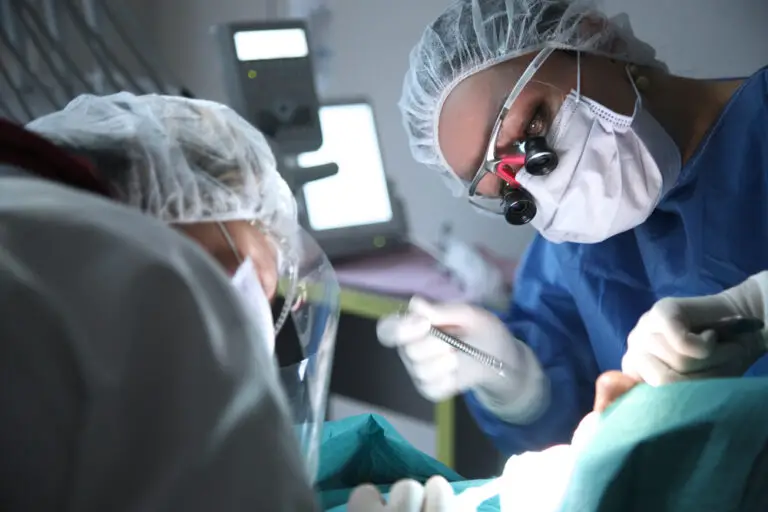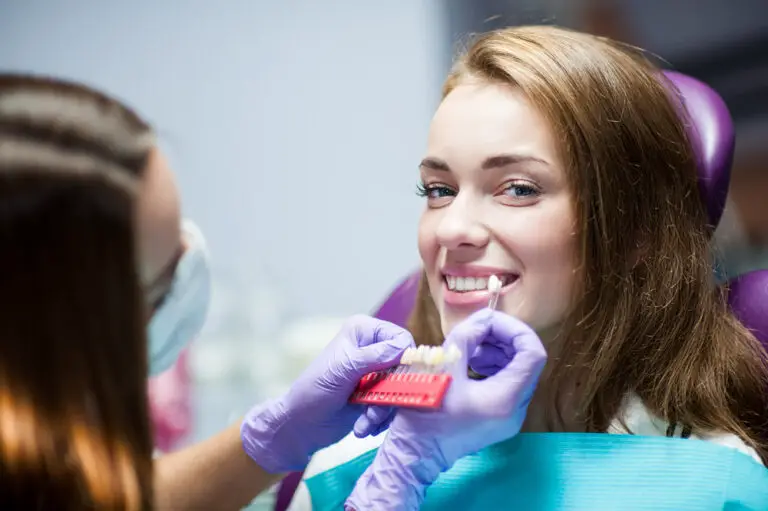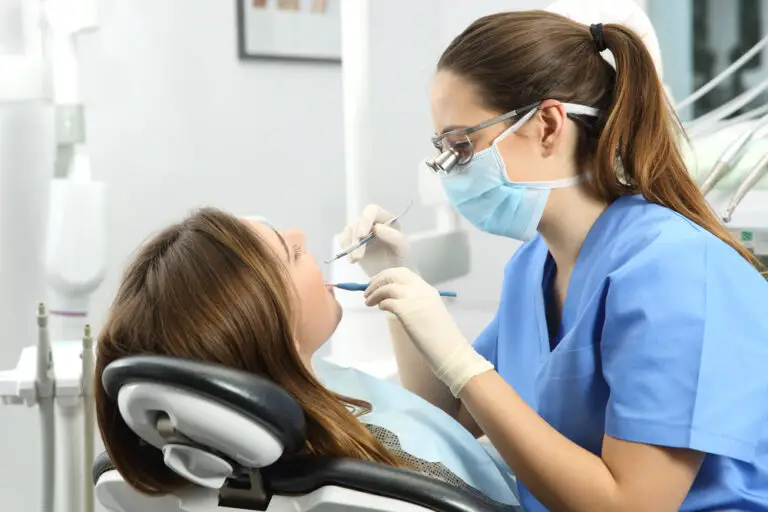Getting dental veneers or teeth covers can drastically improve the look of your smile. But most patients wonder—can I still eat normally with artificial tooth coverings bonded over my real teeth? The good news is that modern dental veneers are quite durable and designed to function similar to natural teeth. With just a few adjustments to your eating habits, you can continue to eat a wide variety of delicious foods with veneers in place.
How Today’s Veneers Differ from Older Versions
Porcelain dental veneers have been used to improve smiles for nearly 100 years. But older versions were fairly thin and fragile. This limited what patients could eat and made veneers prone to cracking or breaking off. However, thanks to technological improvements, veneers today are much more realistic and resilient. Here’s how modern veneers differ:
- Stronger materials – Current veneers use high-tech dental ceramics like lithium disilicate that imitate teeth’s natural translucency and can better withstand biting pressure. The materials are stain-resistant and mimic the light reflectivity of real teeth.
- Thicker porcelain – Where older veneers were often as thin as 1/2 millimeter, today’s veneers are commonly 0.7 – 1 millimeter thick. This makes them much better at handling biting and chewing forces. The thicker material resists chipping or fracturing.
- Advanced bonding – Dentists now use stronger resin cements and bonding agents to adhere veneers to the teeth with a tighter, longer-lasting connection. This prevents veneers from becoming loose or unbonded while eating.
- Natural aesthetics – With high-resolution digital imaging, veneers can be intricately designed and colored to perfectly match your surrounding teeth. You get a seamless, natural looking smile.
- Minimal tooth reduction – Newer techniques allow veneers to be placed with removing very little of the natural tooth structure (as little as 0.5 millimeters). This preserves more of your original tooth and results in a stronger foundation.
Thanks to these improvements, porcelain veneers today are incredibly life-like, functional, and able to handle normal eating habits much better than earlier versions. Patients can eat their favorite foods with proper care and technique.
Foods You Can Eat with Porcelain Veneers
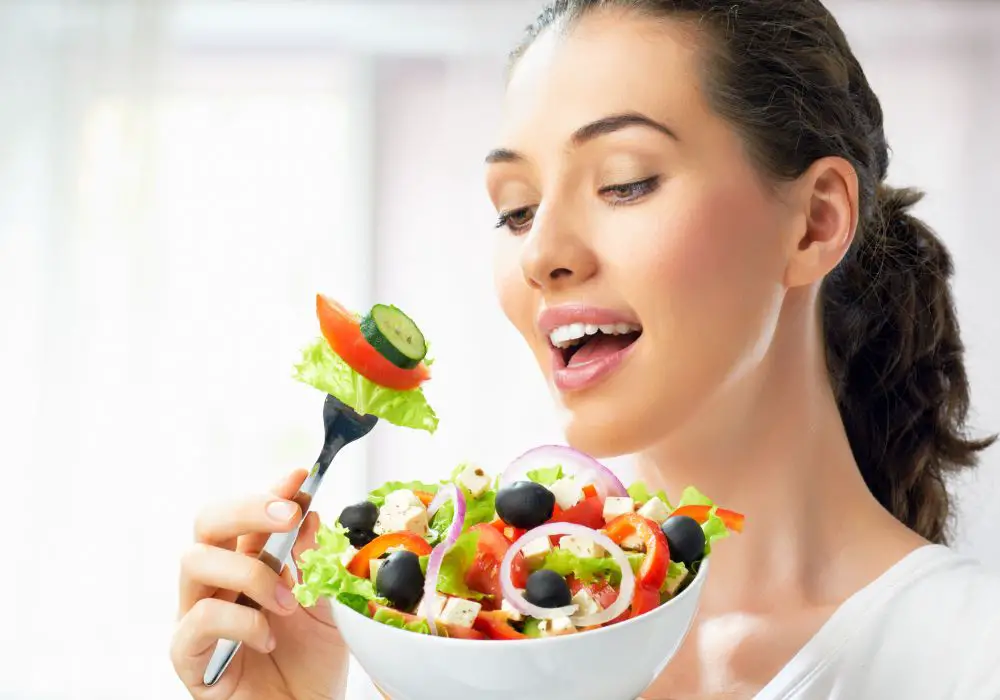
Dental veneers create a durable shell that protects your teeth and allows you to eat a wide range of foods. Here are some of the foods you can comfortably eat with today’s strong, resilient veneers:
Fresh fruits and vegetables
Fresh produce like apples, carrots, celery, and salads are fine to eat with veneers. Just cut harder fruits and veggies into smaller pieces instead of biting into whole apples or carrots. Use care not to crack veneer edges with your front teeth.
Breads, grains, cereals
Breads, rice, pasta, crackers, tortillas, pancakes, and breakfast cereals can be eaten normally with veneers. Avoid tearing off chunks of bread with your front teeth. Use your back teeth to bite foods or tear pieces with your fingers.
Pizza, sandwiches, and wraps
Sandwiches, burgers, tacos, burritos, and wraps are safe to eat with veneers. Be extra gentle and use your back teeth if sandwiches have a hard bread crust or thick toppings. For overstuffed sandwiches, consider cutting them into smaller pieces.
Nuts, seeds, popcorn
Crunchy snacks like nuts, trail mixes, crackers, seeds, granola, popcorn are fine in moderation. Avoid biting down directly on whole nuts. The hard shells can damage veneer edges.
Meat, poultry, fish
All types of meat, including tough, charred steaks or jerky are okay to eat with veneers. Cut meat into bites first when necessary. Avoid biting directly into bones or hard cartilage which could crack veneers.
Milk, cheeses, yogurt
Dairy products like milk, smooth yogurt, cheese slices or shredded cheese will not harm veneers. Harder aged cheeses may need to be cut into smaller pieces before eating to avoid cracking thin veneer edges.
Cooked vegetables
Well-cooked softer veggies like steamed broccoli, mushrooms, peas, potatoes, or roasted veggies are fine to eat normally. Just cut any crunchy outer skins, stems or casings first.
Eggs, omelets, pancakes
Eggs, omelets, French toast, waffles, pancakes, and other breakfast foods can be eaten as usual with veneers. Avoid any extremely crunchy, overcooked edges of fried eggs or crispy pancakes.
Cakes, cookies, pies
Soft desserts like cakes, pie, cobblers, custards or puddings are safe with veneers. Be careful of extra hard outer crusts, candy toppings or fillings. Cut cookie crispy edges or taffies into smaller pieces before chewing.
Soups, stews, overcooked pasta
Soft, well-cooked foods like soups, stews, casseroles, mashed potatoes, or overcooked pasta can be eaten normally. Just avoid any very hard leftover burnt edges of noodles or crusty baked casseroles.
Juices, soft drinks
Fruit juices, sports drinks, soda, coffee, tea, wine, and other beverages won’t damage veneers. Staining drinks like coffee may gradually alter the color slightly over time. Avoid dark sodas, wines or juices for several days after first getting veneers.
With common sense precautions and proper eating technique, you can continue enjoying a healthy, balanced, normal diet with veneers. The durable porcelain and bonding materials allow veneers to handle most everyday foods.
Foods to Avoid or Limit with Veneers
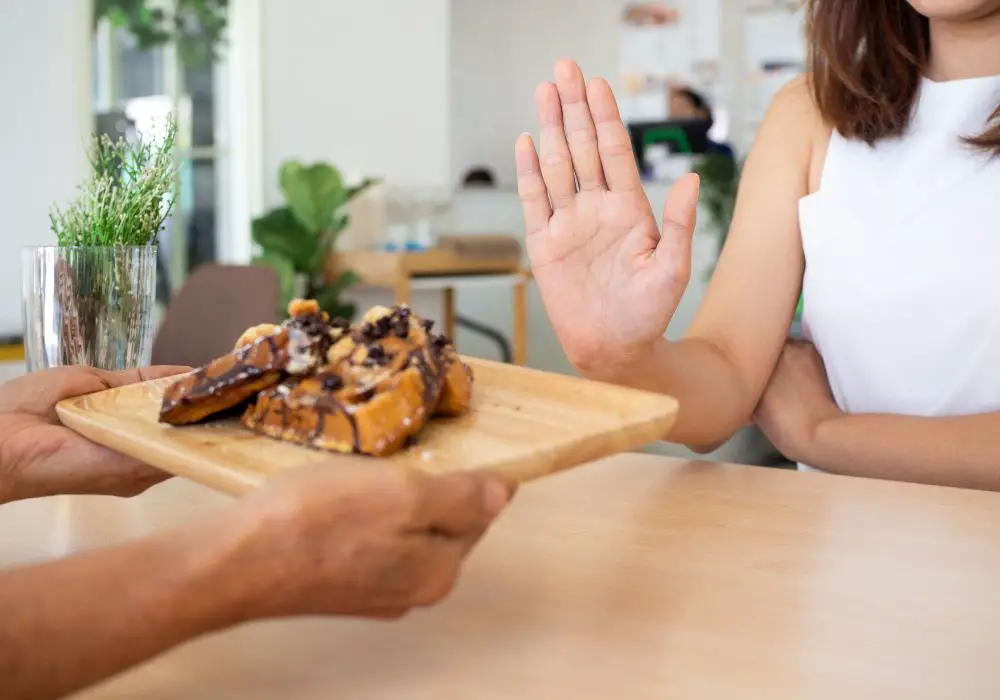
While veneers allow you to enjoy all your favorite treats, a few specific foods require extra care or should be limited to prevent damaging veneers.
Hard candy and cough drops
Extra hard candies like lollipops, jawbreakers, mints, or cough drops can potentially crack veneers if you bite down forcefully. Either avoid them or let them slowly dissolve in your mouth instead.
Chewy candies and gum
Sticky, chewy sweets like caramel, taffy, gum, Starbursts or Skittles get trapped between teeth. They can loosen veneers and even pull them off if excessive force is used. Limit how often you eat sticky candies and gently floss out any pieces.
Whole nuts and seeds
Hard nut shells and seeds like sunflower or pumpkin seeds can damage thin veneer edges. Either avoid whole nuts in shells or use caution not to bite down directly on them.
Crusty breads and rolls
Bread crust, rolls, and crunchy flatbreads require gentle chewing. Tear pieces off with your hands instead of biting into these breads with your front teeth. Use your back teeth to slowly chew any crusty areas.
Raw veggies and fruits
Whole raw apples, carrots, celery stalks, and other firm fruits or veggies are risky to bite into. Slice these foods into smaller pieces first before eating. Don’t tear or bite chunks off using your front veneered teeth.
Sticky rice dishes
Foods with rice that is extra sticky and chewy like rice candies or taffy-like rice pudding can pull on veneers. Eat these sparingly or avoid chewing with your front veneered teeth.
Ice and ice cream
Hard ice cubes and popsicles can fracture veneers. Use care when crunching ice. Avoid biting directly into whole ice cream bars. Allow ice cream to soften first instead of biting it.
Bones
Bones from poultry, meats, or fish can damage veneers. Avoid biting into bones or hard cartilage. Remove meat from bones using utensils or your fingers instead of teeth.
Alcoholic beverages
Wine, cocktails, and dark beers or liquors may gradually stain veneers over time. Rinse your mouth after drinking them. Excessive alcohol consumption makes you likelier to bite or chew abnormally hard.
By being choosy about these specific foods, you can prevent expensive repairs or replacements to maintain your beautiful veneers.
Proper Eating Habits with Veneers

In addition to food choices, practicing proper eating techniques will keep veneers protected. Here are some do’s and don’ts when eating with veneers:
- DO chew gently, especially with front teeth. Avoid chomping, biting or tearing motions.
- DO cut harder foods into small pieces before eating.
- DO use your back teeth to bite foods whenever possible.
- DO pick or tear meat from bones using fingers or utensils.
- DO floss gently after eating to remove any stuck foods.
- DON’T use your teeth to open bottles, bags, packages or other items.
- DON’T bite into whole apples, corn on the cob, etc.
- DON’T chew ice, hard candies, bones or other hard objects.
- DON’T tear or bite off pieces of bread crust or pizza crust with front teeth.
- DON’T chew primarily on only one side, distribute chewing pressure evenly.
Be aware of habits like fingernail biting, pencil chewing, bottle cap or pen opening with teeth. Eliminate any behaviors that could chip or crack veneers. Using proper care and techniques will help your veneers last many years beautifully.
Adjusting to Eating and Chewing with Veneers
It may take a little time to adjust your chewing and eating style after getting veneers. Here are some tips to help with the transition:
- Start with soft foods like yogurt, oatmeal, soups or cooked veggies the first couple days. Gradually work your way up to harder or crunchier items.
- Cut foods into small pieces. Don’t try biting into large pieces of raw fruits or veggies at first. Tear breads or sandwiches into halves or quarters.
- Drink with straws the first few days to avoid pain if liquids hit sensitive teeth.
- Chew slowly and deliberately rather than chomping down. Be conscious of your bite force.
- Use painkillers like ibuprofen or acetaminophen if veneers are tender initially. Discomfort should resolve within a week.
- Avoid chewing gum or sticky candies until your mouth adjusts to the feel of veneers.
- Notice which foods cause discomfort or get trapped near veneers. Stick to softer versions or cut those foods into small pieces.
- Ask your dentist if you have any questions or concerns about eating certain foods.
With just a little adaptation, veneers will begin to feel normal in your mouth. Soon you’ll be eating a totally regular diet comfortably.
Long-Term Diet and Nutrition with Dental Veneers
While veneers allow you to eat normally, a healthy diet is still important for your overall oral health. Here are some healthy eating tips to follow long-term with veneers:
Eat crunchy fruits and vegetables
Crisp produce helps clean plaque from teeth and stimulates gums. Stick to soft ripe fruits and peel veggies first if mouth is tender.
Choose nutritious whole grains
Whole grain breads, pastas, and cereals give important fiber and nutrients. Just use care and eat slowly at first when adjusting to veneers.
Include dairy for bone and tooth health
Dairy products that are low in sugar provide calcium and vitamin D for strong teeth. Opt for soft cheeses initially until you adapt to veneers.
Stay hydrated with water
Drink water throughout the day, especially between meals. Sugary drinks expose teeth to constant acid and starch that can loosen veneer bonding.
Limit acidic and sugary foods
Frequent acidic or sugary snacks and sodas weaken tooth enamel. Follow veneers with water and limit acidic fruits.
Avoid excessive alcohol
Heavy alcohol consumption stains teeth, causes dehydration and impairs judgment around proper oral habits.
Be mindful of sweets
Sticky candies get trapped near teeth. Hard candies could eventually crack veneers if bitten into forcefully. Enjoy sweets in moderation.
Practicing good nutrition provides a strong foundation for dental and overall health. When combined with proper oral hygiene and eating habits, veneers can last for many years beautifully.
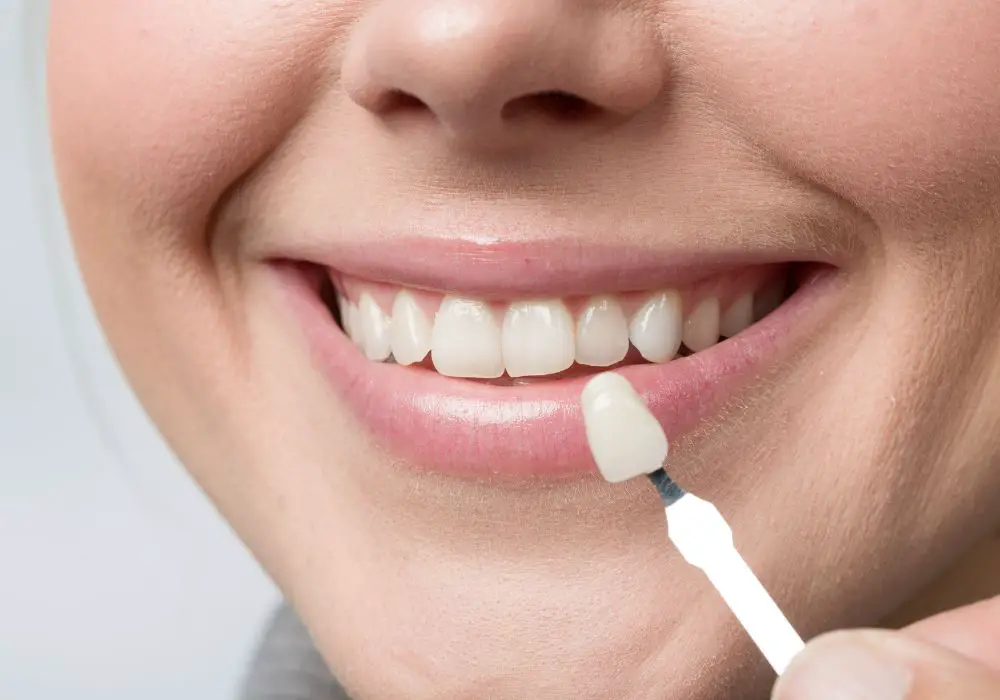
Common Questions About Eating with Veneers
Many patients have additional questions about how dental veneers may affect eating certain foods. Here are answers to some frequently asked questions.
Can I ever bite into an apple or corn on the cob with veneers?
You should avoid biting directly into whole apples, corn on the cob, or other hard fruits/veggies. The pressure could crack thin veneer edges. Softer apples are safer, but for firm apples cut them into wedges or slices first. For corn, slice kernels off the cob with a knife instead.
How soon after getting veneers can I eat normally?
At first your teeth may be sensitive and veneers can feel awkward. Start with soft foods the first couple days then progressively work your way up to more textured foods. Most patients can resume a fairly normal diet within a week. But some tenderness may remain for 2-3 weeks.
Do I need to cut sandwiches into tiny pieces before eating?
For most sandwiches, just cutting them in half should suffice. Unless it’s an extremely thick or hard bread, no need to chop sandwiches into tiny pieces. Simply avoid biting into sandwiches using your front veneered teeth. Tear pieces off with your hands if needed. Use your back teeth to chew.
Can veneers become loose or fall off when eating?
With strong modern bonding techniques, veneers rarely fall off while eating as long as you avoid very hard or sticky foods that pull on them. Accidents can happen but it’s extremely rare for a properly bonded veneer to just release and debond while chewing normal soft foods.
Can biting into something hard like candy or nuts seriously damage veneers?
Biting into an extremely hard candy, nutshell or other food could certainly crack a veneer. The fragile edges are most susceptible. This type of damage may require repairs or replacements. But small cracks or chips can sometimes be smoothed or bonded if caught early. Avoid sudden hard biting.
Do I need to cut pizzas, sandwiches, burgers into pieces for kids with veneers?
Kids often chomp and bite with a lot of force that could potentially crack their veneers. It’s smart to cut sandwich halves into quarters, cut pizza slices in half, remove bread crust, etc. to minimize risks. Teach them to use their back teeth, chew slowly, and not bite off big chunks.
Can eating sticky foods pull veneers off teeth?
Excessively chewing tough, sticky, gummy foods like caramels can in rare cases loosen or pull off veneers if they aren’t bonded well. Chewy candy only causes problems if trapped between teeth and chomped on aggressively. Just be gentle flossing out any stuck pieces.
Do veneers change how foods taste?
Veneers themselves do not affect the taste or flavor of foods at all. However, some people note foods taste different at first because the feel of hard veneers in your mouth is different than natural teeth. Your brain adjusts to this quickly, usually within a couple weeks.
How long do I need to be careful eating with new veneers?
The first couple weeks are most critical as the veneers bond firmly to teeth. So be very gentle, chewing softly and cutting foods. After 2-4 weeks, veneers should be stable enough for normal chewing forces as long as you avoid very hard foods that could crack them.
Following proper care and eating techniques will allow porcelain veneers to handle the wear and tear of most everyday eating. With just a little adaptation, veneers can look and function beautifully for many years.
Conclusion
Adjusting eating habits takes time when you first get dental veneers. But with today’s strong ceramic materials and bonding methods, veneers allow you to enjoy all the same foods you are used to eating. Use care and proper techniques like chewing gently, cutting harder foods into pieces, and avoiding direct biting pressure on veneers. Limit excessively hard, sticky and chewy foods that could damage fragile veneer edges. With smart food choices and eating habits, dental veneers provide esthetically pleasing, natural-looking smiles that can last for decades.

